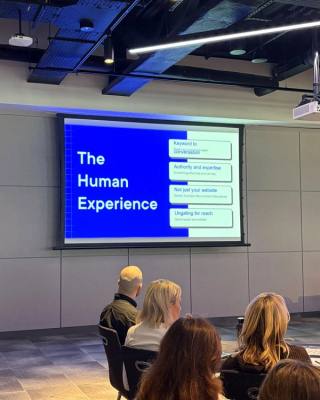The development of account-based marketing (ABM) was always a matter of time.
With the increasing availability of account information, marketing teams are now seeking ways of directly targeting accounts, and web solutions are having to keep pace.
But let’s start with the basics. What is ABM?
Account-based marketing: the basics
ABM is a B2B strategy where marketing and sales teams identify and target a specific list of high-value accounts, treating each one as a unique market. The goal is to bring in high-quality accounts which can quickly convert to sales, even at the cost of a reduced number of total leads.
For anybody who’s worked in marketing or sales, the idea of personalising outbound content to your audience is nothing new. Think, for instance, of customising email subject lines or building industry-specific content campaigns.
What sets ABM apart is the level of precision, and the degree of knowledge curated on the target in question. An ABM campaign defines a list of specific accounts from the outset, and builds content for the entire account, not just one individual. This means that each stakeholder on the account receives information targeted based on their specific role in their specific firm.
For obvious reasons, ABM at this level relies on increasingly elaborate marketing tools. 6sense, Demandbase, RollWorks, Mutiny, and Terminus are just some of these, all of which provide a range of data on specific accounts which can be targeted. It is the greater availability of these tools which makes ABM an increasingly attractive option for marketing teams.
Personalised entry points
If ABM represents the extreme personalisation of outbound content, we also need to think about the customisation of inbound experiences. After all, why go to the effort of building hyper-specific content for a targeted account, only to welcome them onto a generic and bland website?
This is where web design comes in, with users brought onto customised landing pages that address the specific needs of their industry, their account, and their role. This maintains the immersion built in previous outbound campaigns, and funnels the user into a pre-planned digital experience.
Unique user journeys
The final stage of the ABM pipeline is the user journey within the website itself. By building an adaptive and user-oriented design, and by altering this experience in real-time based on user behaviour and their arrival channel, visitors can receive an immediately engaging experience.
Using AI-powered content adaptations, a website’s copy, imagery, and even layout can be changed to perfectly match the needs and expectations of the user. And because user behaviour can be tracked throughout your website, the user experience will only become more personalised as visitors make their way towards a lead-gen page or form. The result is an incredibly personalised UX, and an extremely high-performing website.
Changing times
Everything may seem different, but some things stay the same.
Even as marketing, sales, and web-design teams transform and adapt to changing technologies, their relationship with one another remains the same. To put it simply, any marketing team with the ambition to engage in effective ABM will need a web-design solution that can match the complex and changing demands of this innovative strategy.
If that sounds like you, Kooba might just be the agency you’re looking for.








